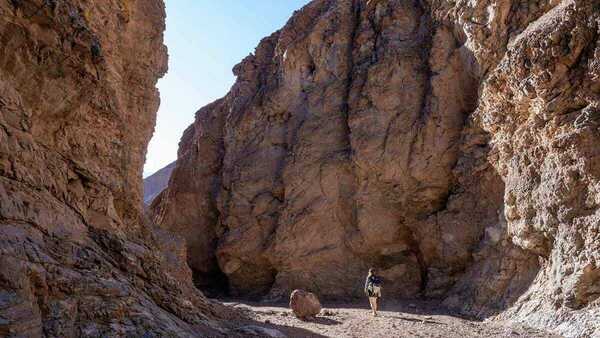
Sydney Higgins was trying to make sense of the readings from her Brunton compass at Red Rock Canyon near Las Vegas.
Geologist Tony Simonetti had taught his Planet Earth students how to take strike and dip measurements in the classroom, but now a theory had turned into reality. He poured water on the angled rock mountainside to identify the exact direction of the dip angle, which reveals the strike plane in a perpendicular direction.
“Doing it in the field is so much more …,” said Higgins, searching for the right word. “I’m a very hands-on learner, so it just made me understand.”
Taking strike and dip readings, Simonetti said, helps a geologist understand a region’s tectonic history — the massive underground forces that thrust up the mountains and stretched out the valleys over millions of years. Seeing firsthand the results of these tectonic plate collisions is exactly why the associate professor in the Department of Civil and Environmental Engineering and Earth Sciences (CEEES) took 16 undergraduates and two graduate students to Death Valley National Park and Red Rock Canyon for a one-credit field trip over spring break.
To read the story, click here.
Originally published by at news.nd.edu on April 22, 2022.